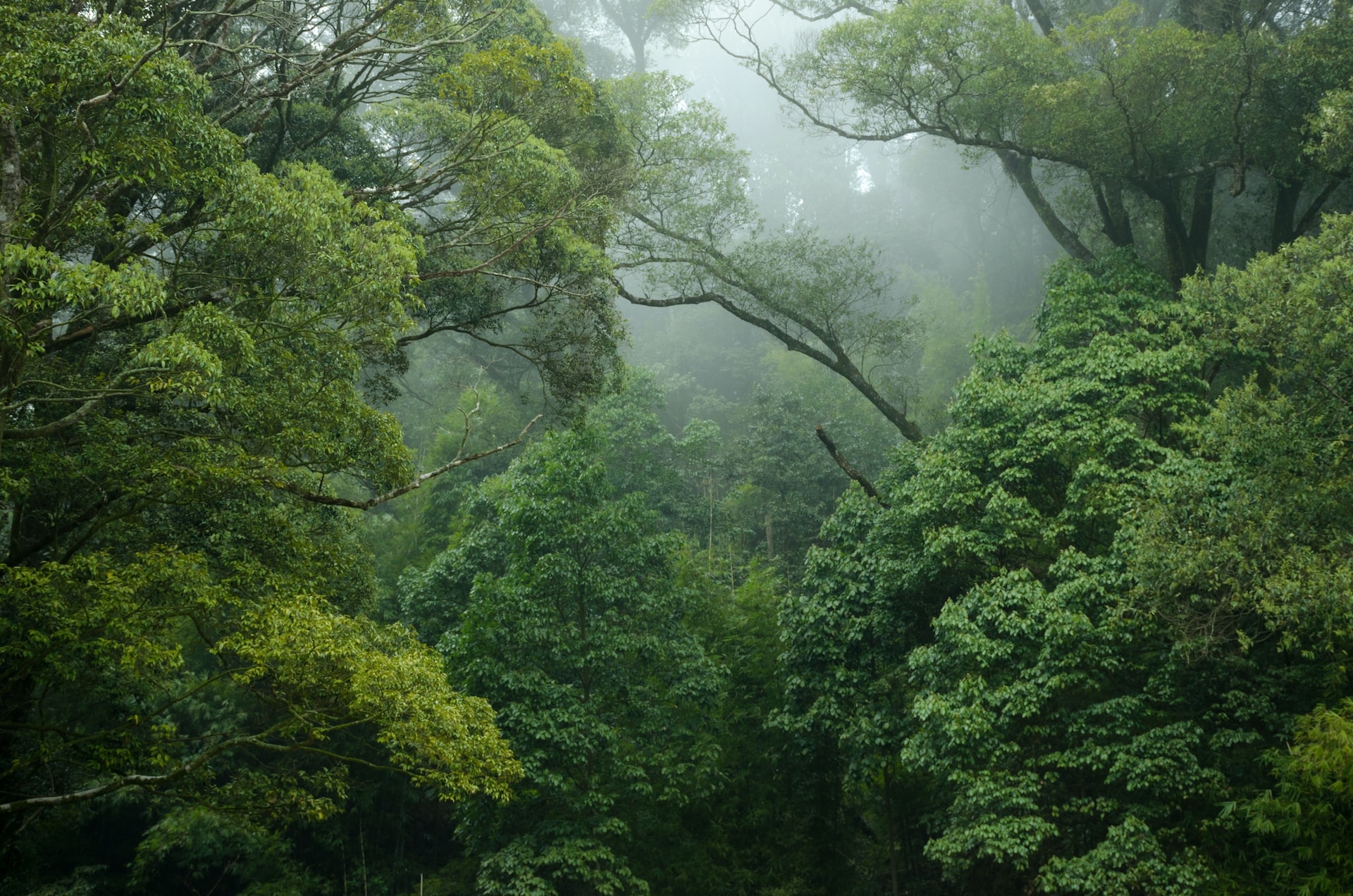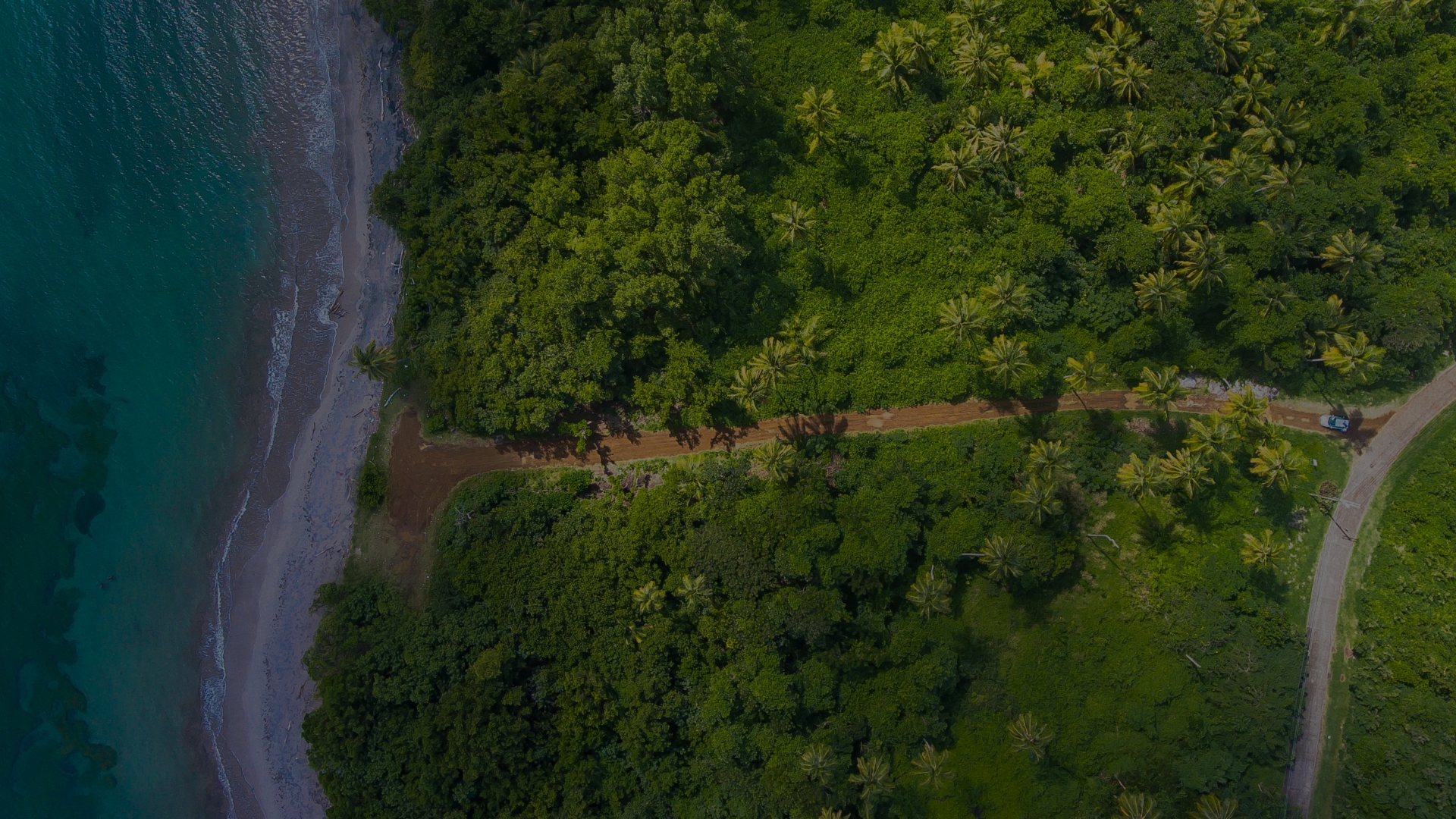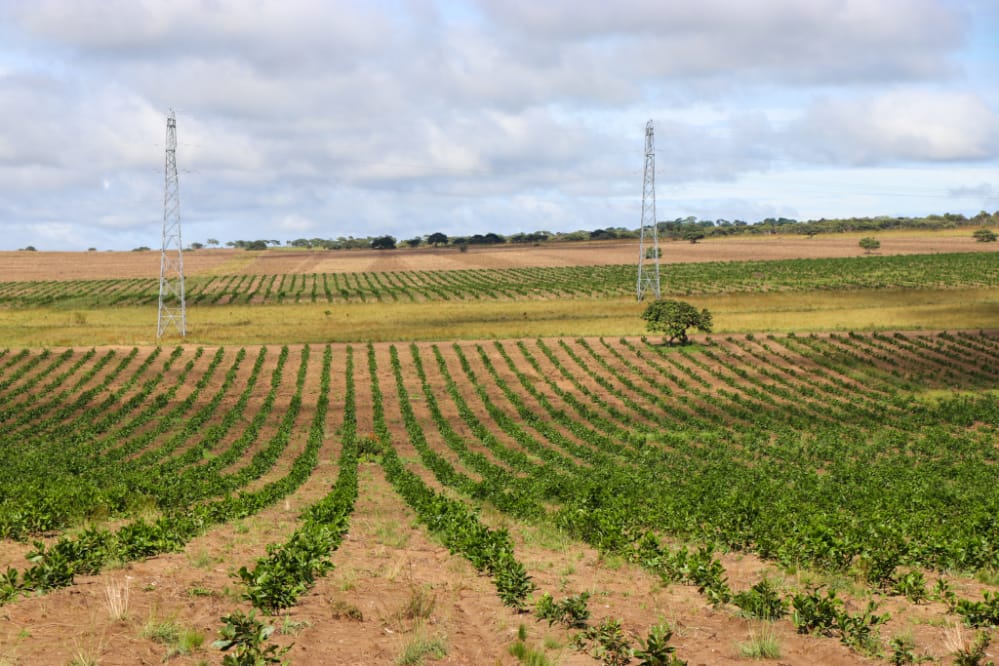The world’s biggest companies, from Netflix to Ben & Jerry’s, are pouring billions into an offsetting industry whose climate claims appear increasingly at odds with reality
In 2019, Elias Ayrey, an idealistic scientist freshly armed with a doctorate in forest conservation, flew from his home in Maine to California and drove deep into the woods. In a timber-framed house dwarfed by giant redwoods, he and his host sat late into the night thrashing out the blueprint for a business with real impact on climate change.
The owner of the house was Diego Saez-Gil, an Argentinian tech entrepreneur who would become chief executive of Pachama, a company that offers to help industry reduce harmful impact by offsetting fossil fuel emissions with carbon credits.
Ayrey was filled with excitement when Saez-Gil invited him to sign on as Pachama’s chief scientist. “It was beautiful,” he said.
But a year later alarm bells were beginning to sound, even as Pachama’s business boomed. Ayrey was becoming uneasy that the soaraway success was built on a fundamental conflict of interest—one that meant Pachama, far from providing a solution to climate change, was fuelling an industry fast becoming part of the problem.
When Saez-Gil’s forest home, where Ayrey’s dream began, was destroyed in a wave of wildfires made more likely, scientists said, by erratic weather linked to global warming, it could almost have been an omen. A year later, Ayrey quit.
A nine-month investigation by SourceMaterial, The Guardian and Die Zeit suggests that the flaws identified by Ayrey at Pachama—which he continues to believe is one of the more conscientious offsetters—are rife in an industry whose claims to mitigate climate change are significantly at odds with reality.
Our analysis of nearly 100 million carbon credits found that only a fraction of them resulted in real emissions reductions. It raises questions for the organisations that many of the world’s biggest companies, and the consumers who buy their products, rely on to set the standard for effective carbon offsetting—in particular the biggest of them, Verra.
“The implications of this analysis are huge,” said Barbara Haya, head of the Carbon Trading Project at the University of California, Berkeley. “Companies are making false claims and then they’re convincing customers that they can fly guilt-free or buy carbon-neutral products when they aren’t in any way carbon-neutral.”
‘We kept selling the credits’
A couple of years on from that first meeting beneath the redwoods, San Francisco-based Pachama was on the way to becoming a powerhouse in the fledgling offsets market: today it has more than 60 employees and almost $80 million from investors including talk show host Ellen Degeneres and tennis star Serena Williams.
“Companies are making false claims and convincing customers they can fly guilt-free”
If anything, things were going too well. With demand roaring, there was “a constant lack of credits to sell,” Ayrey said. He didn’t doubt his co-workers’ commitment to a shared ideal. But the need for quick returns was leading them to cut corners—and in one case, he says, to sell credits from a project that seemed like a sham.
“They really care about their stated mission,” he said. “I just don’t think they did it. Short-term profits were far more important than really disrupting the space.”

Pachama rates and sells carbon credits. Most often, these are generated by preventing deforestation: owners of threatened forests create credits by protecting them, claiming that extra carbon is absorbed by trees that would otherwise be cut down. As chief scientist, Ayrey’s role was to rate these projects so that Pachama could market the best ones to its clients.
The problem was that in several cases, Pachama appeared to be selling credits generated from forests under no threat at all—and in at least one, where deforestation had actually increased.
In the Madre de Dios region of the Peruvian Amazon Basin, a company called Bosques Amazónicos (BAM) was paying conservation money to Brazil nut farmers. Buyers of the resulting credits included Macquarie, the Australian finance group, and fashion brand Giorgio Armani.
But in 2021 Foodwatch, a campaign group, found that BAM had overestimated the deforestation it was preventing by a factor of eight, and the company later admitted that some harvesters had destroyed forest they were being paid to protect. Satellite images show that tree-clearing in the area has risen since the scheme began.
When he analysed BAM’s annual updates, Ayrey noticed that the company seemed to be excluding areas where farmers had chopped down trees, readjusting boundaries as their activity shifted. Pachama should have pulled the plug as soon as the suspicion of irregularities was raised, Ayrey said. Instead, his bosses dragged out discussions for a month.
“We kept selling the credits the whole time,” he said.
Deeply frustrated, Ayrey left to co-found Renoster, a carbon markets rating consultancy that aims to increase market transparency. (SourceMaterial has purchased analysis from Renoster as part of a separate investigation.)
Saez-Gil, Pachama’s chief executive, told SourceMaterial that when it examines projects, the company seeks “expert perspectives inside and outside our organisation”. This involves “healthy and sometimes lengthy discussions” about their merits, he said, adding that Pachama had not sold the Brazil nut credits for “a long time”.
“Pachama’s main intention is to help bring more integrity, trust and transparency to nature-based carbon markets using technology, data and science,” and the company takes on only one in three projects it evaluates, he said. “Done well, it’s a mechanism that has an enormous potential to help finance carbon sequestration.”
BAM did not respond to requests for comment.
‘Cheaper, less demanding’
Standards for the offsets marketed by Pachama and many of its competitors are set by Verra.
Founded in Switzerland in 2007 and now based in Washington DC, Verra’s original two-person team has swelled to more than 80. At the time of writing, Verra was advertising 26 vacancies, seven of them with six-figure salaries.
Household names like British Airways and Gucci rely on Verra to authenticate their credits, which now approves three out of every four carbon credits globally. Growth is ramping up, with sales jumping from around $7 million in 2018 to $41 million in 2021.
During last autumn’s climate negotiations in Egypt, Verra announced it had issued its billionth carbon credit, meaning that in 15 years it has rubber-stamped projects claiming to cancel out three times the emissions the UK produces in a year.
“Verra has always been very good at undercutting other standards”
Verra’s main role is to publish methodologies for creating carbon offsetting projects, including forest protection initiatives, and authenticate the credits they generate.
‘Avoided deforestation’ has always been controversial. At best, it underpins projects that save some of the planet’s most precious resources from destruction. At worst, it risks degenerating into a sort of protection racket where landowners extract fees in return for promises not to fire up the chainsaws. Often, it occupies a grey area in between, relying on hypothetical projections that can be tough to verify.
Gold Standard, Verra’s main competitor, refuses to issue credits from avoided deforestation. But rather than discrediting the methodology, this has simply helped Verra to corner a market, says Axel Michaelowa, head of international climate policy at the University of Zurich.
Verra’s stance means that at least 30 per cent of credits currently being sold globally are for avoided deforestation.
“Verra has always been very good at somehow undercutting other standards in the voluntary market by being cheaper, by being less demanding,” Michaelowa said. “And less demanding, of course, means having lower environmental integrity.”
SourceMaterial’s investigation casts doubt on vast numbers of Verra’s carbon credits, raising the prospect that a $2 billion market, predicted to expand rapidly, is widely based on exaggerated claims.
‘Disappointing and scary’
SourceMaterial and its partners reviewed data shared by scientists who carried out two major studies on Verra forest projects, together accounting for 95 million carbon credits—theoretically enough to balance the annual emissions from 25 coal-fired power plants or burning 220 million barrels of oil.
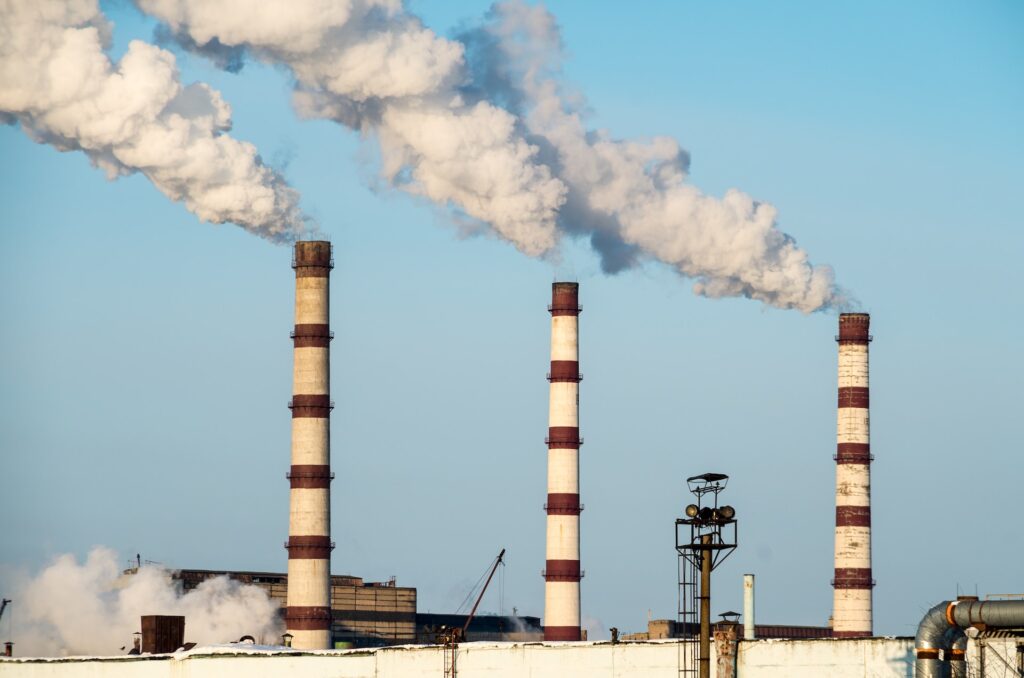
Our analysis suggests that only 5.5 million of those credits, or 6 per cent of the total, were real emission reductions. Of the 29 projects, only eight reduced any emissions at all.
Both studies, carried out by the same international group of scientists, estimated the real amount of deforestation prevented by the projects to calculate how many credits they should have received.
SourceMaterial then used Verra’s database to compare this with the number of credits each project actually received in the same timeframe. The disparity is stark: 94 per cent of those credits are likely to be worthless, the calculations showed.
Companies who bought the credits include Disney, United Airlines, Air France, Samsung, Liverpool Football Club, Ben & Jerry’s, Netflix and Chevron.
The studies’ findings are “disappointing and scary”, said Erin Sills, a scientist at North Carolina State University and a co-author of both papers.
In a further analysis, SourceMaterial and its partners used data collected by researchers at Cambridge University to examine claims made by 32 projects, 19 of which were also included in the other studies.
The Cambridge researchers estimated how much deforestation had actually been prevented in the first five years of these projects.
They found that while the projects claimed to cover forests the size of Italy, they had only protected an area about the size of Venice. Using a formula shared by the scientists, SourceMaterial and its partners found that the projects had exaggerated avoided deforestation by an average 406 per cent. Only six of the 32 had not overstated their effectiveness.
“I wanted to know if we could trust their predictions. The evidence suggests we cannot.”
The findings show that projects have “vastly overstated” their climate benefits, said Yadvinder Malhi, professor of ecosystem science at Oxford University.
A Verra spokesperson, Steve Zwick, said that the scientific studies reviewed by SourceMaterial produced useful data but drew incorrect conclusions as they didn’t adequately consider “site-specific drivers of deforestation” or “accurately represent the pre-project conditions in the project area”.
Verra’s methodologies entail “conservative” estimates of total emission reductions and are more credible—and revised more frequently—than previously, he said.
Instead of criticising the studies, Verra needs to show why their methodologies are better, says Thales West, a lead author on the two international studies, who previously worked as a project auditor and began his research because of doubts over Verra forecasts.
“I wanted to know if we could trust their predictions,” he said. “The evidence from the synthetic controls suggests we cannot.”
‘Crazy’ credits
In Zimbabwe on the shores of Lake Kariba, the world’s largest artificial reservoir, an offsetting project claims to be protecting a forest three times the size of Luxembourg.
It is run by South Pole, offsetting’s first ‘unicorn’ or billion-dollar start-up, now responsible for more carbon projects than any other organisation. The Swiss company has sold credits from Kariba to Volkswagen, Delta Airlines, Lidl and the oil giant TotalEnergies, which used them as part of a controversial claim to have shipped carbon-neutral gas.

Satellite images supplied by Global Forest Watch and analysed by Ayrey suggest that the project overstated the threat to the forest by up to 30 times.
Documents seen by SourceMaterial show that South Pole did not originally intend to push its numbers so high. In an early filing in Verra’s registry, the company estimated that Kariba would prevent 52 million tonnes of carbon emissions—but later revised this to 197 million tonnes.
According to South Pole spokeswoman Isabel Hagbrink, the project initially adapted Verra’s model to make it more conservative. But Verra objected to the alterations and ordered South Pole to re-do its calculations, she said.
“The numbers of Kariba always seemed too high,” said an expert with knowledge of the project, who spoke anonymously for fear criticising the project could harm their career. “It was crazy how many credits the project threw up.”
South Pole told SourceMaterial the methodology has a “self-correcting mechanism”, which should cause the number of credits awarded to the project to fall in the future. Verra declined to comment on whether it had requested a recalculation.
On one occasion—in Peru, at the Madre de Dios project which triggered Ayrey’s resignation from Pachama—Verra did warn the operators, BAM, that their plan to exclude areas where nut harvesters had cut down trees was unacceptable, an auditor’s report shows.
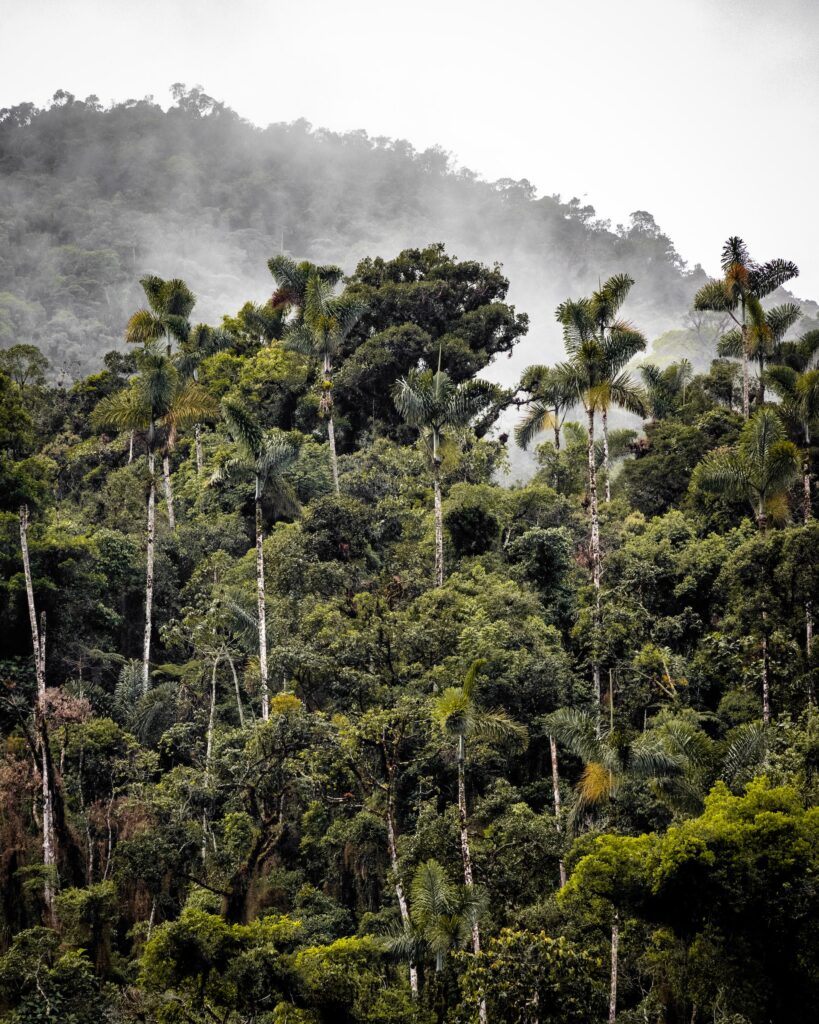
But a few days later, BAM and the auditor decided in a meeting to take no further action, the document shows, and Verra made no change to the amount of credits the project generated.
Verra told SourceMaterial that the original warning was based on a “miscommunication”.
‘Leap of faith’
David Antonioli, Verra’s chief executive, acknowledged in an interview that avoided deforestation models can be unreliable.
“The reality is you’re creating a counterfactual,” he said. “There’s a leap of faith.”
One of Verra’s most frequently used methodologies, VM0015, was put forward in 2008 by Lucio Pedroni, who runs his own offsetting consultancy. An auditor who reviewed the model for Verra, Kyle Holland, warned at the time that it would “grossly overestimate deforestation” and suggested an amendment. Verra’s final version gave projects the option of using Holland’s change or the original version he had warned about.
Holland, himself a co-author of the methodology used at Kariba, told SourceMaterial that it’s very tempting for projects to “abuse the flexibility of these models” to inflate their impact.
“These methodologies have been so flexible that anything goes,” said Eftimiya Salo, head of carbon projects at Compensate, a broker. “You could choose the best option to maximise your profit.”
Pedroni was also involved in the drafting of another of Verra’s most popular methodologies, VM0007. Early on, Swiss auditors SQS raised concerns because Pedroni and his co-authors wanted to consider a forest at risk if a project developer merely declared an intention to cut down trees.
It’s easy to see how this can be gamed, says Ayrey, citing Yacumama, an eco-lodge in Peru where tourists can visit untouched Amazon jungle. The owners claimed that without carbon credits, they would clear-cut the forest. But its remote location makes this nonsensical, as it would be impossible to transport the timber to market, he said.
Verra said that carbon finance had allowed Yacumama’s owners to “implement a more sustainable business model”.
Pedroni told SourceMaterial that Verra’s system “has been abused by some users”, leading to a few projects overestimating their impact.
“Verra remains one of the most serious organisations that is trying to serve a rapidly evolving market in a heavily politicised industry,” he said.
A new empire
Verra regularly updates its methodologies and says it plans to involve national and local governments more closely, as well as accounting for wider trends in deforestation. But credits created with outdated models are still on the market, says Salo of Compensate.
Zwick, the Verra spokesman, said it would be impossible to rescind old credits if the issuers followed the rules at the time, and that Verra hopes the market itself will correct the problem as values fluctuate depending on demand.
“We’ve always had this idea that if something happens and a project is perceived as having been over-credited, that should be a market decision,” he said.
Any changes are still being figured out by Pedroni and other members of Verra’s advisory group. Charlotte Streck, founder of Climate Focus, which developed the VM0007 methodology with Pedroni, is on the stakeholder group for the process.
Despite this, Climate Focus received at least $1 million dollars in licensing fees for VM0007 in recent years, according to Verra’s tax returns.
Streck said that “methodologies can be reinterpreted and exploited” and that in some cases there was a risk of “inflation of credits”. Her company now sends much of its profit from the model “to NGOs or not-for-profit purposes”, she said.
Meanwhile, Verra continues to take 10 cents from project developers for every credit it verifies. The more credits it approves, the more money it makes, giving it little incentive to limit the number of sub-standard offsets on the market.
“There is simply nobody in the market who has a genuine interest to say when something goes wrong,” said Lambert Schneider, a researcher on international climate politics at the Öko-Institut in Berlin.
The problems plaguing the burgeoning offsetting industry aren’t, for the most part, fraud or corruption, more a failure to master the complexities, which is eroding trust, says Ayrey.
“There are very few really bad people out there,” he said.
Verra has good intentions too, he insists: “Most of the people working there are really good people but they don’t have the bigger context of just how detailed and messed-up these protocols are.”
Verra is becoming increasingly important. In 2021 a court in the Netherlands ordered a buyer of Verra-backed credits, Shell, to reduce its emissions. The oil major aims to get its annual carbon credit purchases up to 120 million by 2030 and is using its offsetting plans as part of an appeal against the decision.

In Colombia and Singapore, Verra’s credits are integral to climate legislation that allows companies to buy them instead of paying carbon taxes. If other nations follow, Verra will be on its way to an “empire”, says Zurich University’s Michaelowa.
With Verra both setting the rules for credits and getting paid through sales, some experts fear that a basic conflict of interest is turning a weapon against deforestation into an empty PR exercise for polluters.
“Companies and citizens need to be able to support projects they can trust,” said Thomas Crowther, professor of ecology at the university in Zurich. “We need to urgently create a system where this is a reality.”
Headline picture: Lingchor, Unsplash
